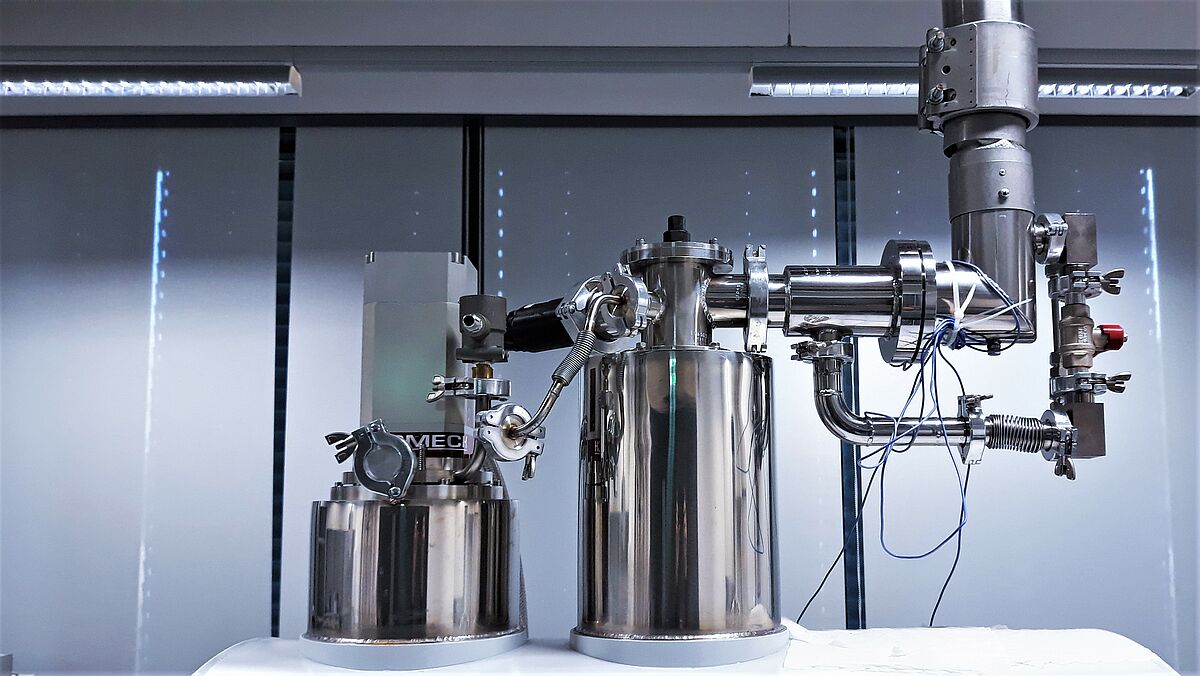Electrospray Ionization (ESI)
Electrospray ionization (ESI) is a commonly used atmospheric pressure ionization (API) technique, developed in the mid-1980s by J. Fenn. It is a soft ionization technique applied in various fields including biochemistry for the analysis of large, complex, non-volatile molecules. ESI is especially suitable for analytes with moderate to high polarity. In comparison to other API techniques like photoionization (APPI) or chemical ionization (APCI), ESI stands out for its remarkable ionization efficiency across a broad mass range. Another advantage of ESI is that comparatively little energy is transferred to the analytes and even solutions with low concentrations can be ionized efficiently. ESI is the method of choice for coupling liquid chromatography to mass spectrometry, whereby additional separation of complex mixtures and thus mass spectrometric analysis of individual fractions can be achieved. [1]
The ESI process is based on the conversion of liquid-phase analytes into gaseous ions. This transfer is achieved by pumping the solution through a spray capillary while applying a high voltage of approximately 3 to 4 kV. The resulting potential difference between the metal capillary and the counter electrode induces charge separation within the solution. At the tip of the capillary nozzle, a so-called Taylor cone is formed, which subsequently transforms into a jet. This jet in turn breaks up into charged droplets, each containing the analyte. The charged droplets undergo a gradual reduction in size as they travel along the electric field, primarily due to the successive evaporation of the solvent. This causes both a decrease in droplet size and an increase in the surface charge of each individual droplet, eventually reaching the Rayleigh limit. Upon reaching the limit, Coulomb repulsion induces the charged droplets to disintegrate into multiple droplets of smaller size in a phenomenon known as Coulomb explosion. This leads to the formation of numerous smaller droplets. The process repeats until gaseous analyte ions are released from the continuously diminishing droplets. Depending on the polarity of the applied voltage, either positive ions [M+H]+ can be generated in the ESI process by protonation or negative ions [M-H]- by deprotonation of the analyte molecules. [1-3]
The application of ESI coupled with detection through FT-ICR-MS (Fourier transform ion cyclotron resonance mass spectrometry) represents a suitable method for characterizing the complex chemical composition of aerosol samples from diverse sources and for the qualitative analysis of shale oils.
Die Anwendung der ESI mit anschließender Detektion durch FT-ICR-MS (Fourier-Transform Ionenzyklotronresonanz Massenspektrometrie) stellt u. a. eine geeignete Methode zur Charakterisierung der komplexen chemischen Zusammensetzung von Aerosolproben aus diversen Quellen sowie zur qualitativen Analyse von Schieferölen dar.
Literatur
[1] Gross, J. H. Mass Spectrometry; Springer International Publishing: Cham, 2017.
[2] Wilm, M. Principles of electrospray ionization. Molecular & cellular proteomics : MCP2011, 10, M111.009407.
[3] Gaskell, S. J. Electrospray: Principles and Practice. J. Mass Spectrom.1997, 32, 677–688.
Highlights
Molecular Characterization of Water-Soluble Aerosol Particle Extracts by Ultrahigh-Resolution Mass Spectrometry: Observation of Industrial Emissions and an Atmospherically Aged Wildfire Plume at Lake Baikal
Schneider, E.; Czech, H.; Popovicheva, O.; Lütdke, H.; Schnelle-Kreis, J.; Khodzher, T.; Rüger, C. P.; Zimmermann, R.
ACS Earth Space Chem. 2022.

